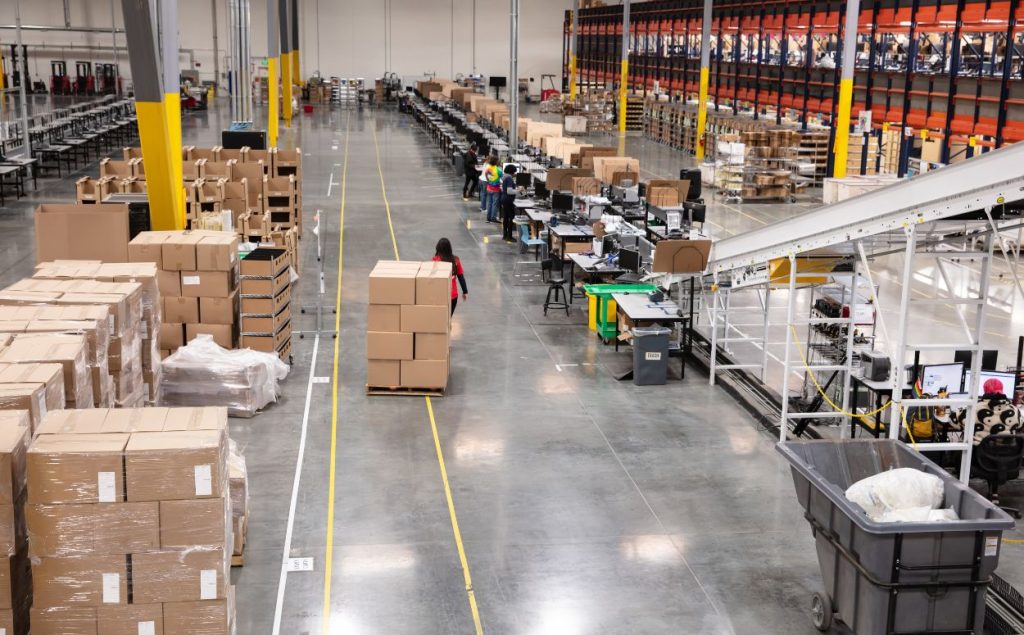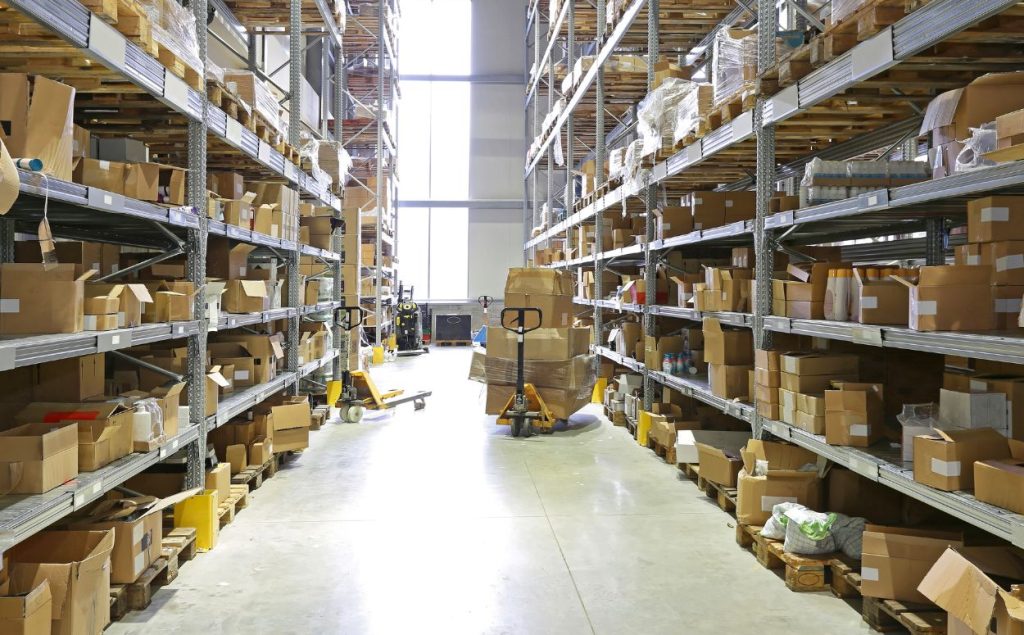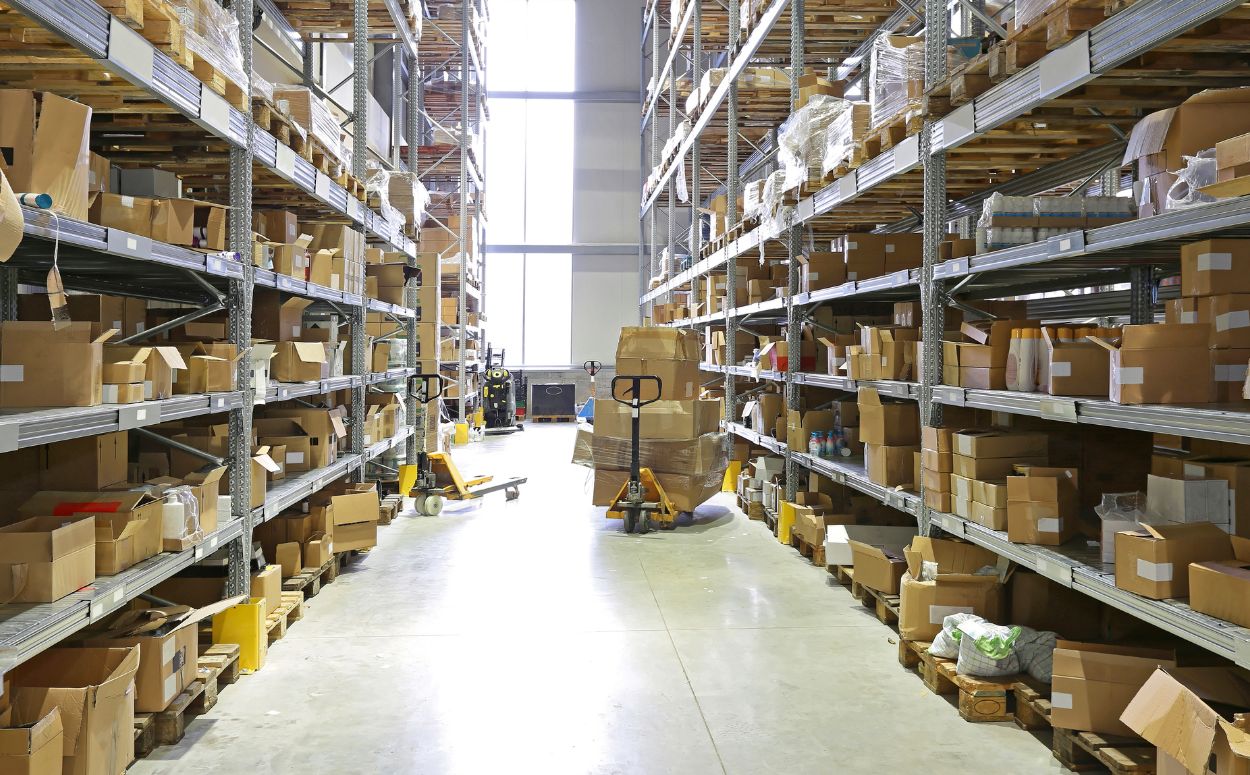Ideal Fulfillment encourages brands to consider them for their fulfillment and how many brands are leaving larger fulfillment centers. In the rapidly evolving world of e-commerce and retail, supply chain logistics play a pivotal role in determining a brand’s success. For many years, large third-party logistics (3PL) providers have been the go-to solution for businesses seeking to outsource their fulfillment needs. These organizations promised efficiency, scalability, and a streamlined approach to inventory management. However, an increasing number of brands are rethinking their reliance on large 3PLs, turning instead to smaller, more agile solutions.

Table of Contents
This shift isn’t happening in a vacuum. It’s fueled by growing frustrations with the limitations of larger 3PLs and a desire for a more tailored and responsive fulfillment strategy. Let’s explore the reasons behind this trend and why brands are breaking free from traditional 3PL giants.
The Challenges of Large 3PL Providers & Leaving Larger Fulfillment Centers
1. Lack of Personalization
Some brands are leaving larger fulfillment centers because they like the idea of having more unique and agile solutions. For example, leaving larger fulfillment centers for Ideal Fulfillmentmight be your best choice. Large 3PLs often operate on a one-size-fits-all model. While this approach works for standardized products and high-volume businesses, it leaves little room for customization. Brands with unique needs—whether it’s special packaging, custom kitting, or personalized customer experiences—frequently find themselves constrained by the rigid systems of large providers.
For brands seeking to differentiate themselves in a competitive market, this lack of flexibility can stifle growth and innovation.
2. Complex Bureaucracy
As organizations grow, so does their bureaucracy. Large 3PLs often have layers of management and standardized processes that can slow down decision-making. For brands experiencing rapid changes in demand or needing immediate attention, navigating this complex structure can lead to delays and frustration. Therefore, some brands have decided to leave larger fulfillment centers for smaller companies.
3. High Costs with Limited ROI
While large 3PLs can offer competitive pricing for high-volume orders, smaller or growing businesses often find the costs prohibitive. Hidden fees for storage, picking, packing, and shipping can quickly add up, leaving brands questioning the value they’re receiving.
4. Communication Barriers
One of the most common complaints about large 3PLs is poor communication. Brands often feel like just another number in a vast client portfolio. When issues arise—such as inventory discrepancies or shipping delays—it can be challenging to get timely responses or resolutions.
5. Inflexibility During Market Shifts
The global supply chain has faced unprecedented challenges in recent years, from the COVID-19 pandemic to geopolitical tensions. Large 3PLs, despite their resources, often struggle to adapt quickly to these changes. Smaller, more nimble providers have proven to be better equipped to pivot during disruptions.
The Rise of Agile 3PL Solutions
Smaller 3PL providers have carved out a niche by addressing the shortcomings of their larger counterparts. These agile solutions offer a more personalized and responsive approach to fulfillment, appealing to brands that value flexibility and customer-centric services.
1. Tailored Services
Unlike large 3PLs, smaller providers prioritize customization. They work closely with brands to develop fulfillment strategies that align with specific goals and customer expectations. Whether it’s eco-friendly packaging, localized shipping options, or unique kitting services, agile 3PLs deliver tailored solutions that help brands stand out.
2. Faster Decision-Making
Smaller 3PL providers operate with streamlined organizational structures, which enable them to make decisions much more quickly compared to their larger counterparts. With fewer bureaucratic layers to navigate, these providers can act promptly and efficiently, ensuring that client needs are addressed without unnecessary delays. This level of agility proves especially valuable in dynamic industries, where market conditions and customer demands can shift rapidly.
For example, if a brand experiences an unexpected surge in orders due to a successful marketing campaign or seasonal promotion, a smaller 3PL can swiftly scale up operations to meet the increased demand. Similarly, when supply chain disruptions occur, such as delayed shipments or inventory shortages, these providers can quickly pivot to find solutions, minimizing downtime and preventing customer dissatisfaction. By responding in real-time to challenges and opportunities, smaller 3PLs empower brands to maintain smooth operations and capitalize on market trends without missing a beat.
3. Cost-Effective Solutions
Agile 3PLs often provide transparent pricing structures and flexible packages, making them a cost-effective choice for growing businesses. By avoiding the hidden fees associated with larger providers, brands can allocate resources more efficiently.
4. Enhanced Communication
Personalized communication is a hallmark of smaller 3PL providers. Clients have direct access to account managers and fulfillment teams, ensuring issues are addressed promptly. This level of attentiveness builds trust and fosters long-term partnerships.
5. Scalability and Flexibility
Agile 3PL providers excel at scaling their services to match the evolving needs of their clients, making them an ideal partner for businesses experiencing growth or navigating fluctuating demands. These providers can efficiently adapt to varying order volumes, whether it’s managing a sudden surge in sales during peak shopping seasons or handling slower periods with reduced activity. Additionally, agile 3PLs are attuned to emerging market trends, allowing them to quickly adjust operations to meet new consumer expectations or accommodate shifts in product offerings.
Unlike larger, less flexible providers, agile 3PLs maintain their service quality even as they scale, ensuring that brands can continue to deliver exceptional customer experiences without interruption. Many brands are leaving larger fulfillment centers due to this. This adaptability extends to supporting innovative business strategies, such as entering new markets or launching limited-time products. For brands aiming to grow sustainably and respond dynamically to market changes, the scalability and flexibility offered by agile 3PLs are invaluable assets that foster long-term success.

Key Benefits of Agile 3PLs
1. Greater Control Over the Fulfillment Process
Smaller fulfillment providers frequently excel at offering heightened levels of transparency and control, which can be invaluable to brands aiming to streamline their operations. With these agile partners, brands gain access to real-time data and detailed insights into their inventory, enabling them to track stock levels with precision and avoid overstocking or stockouts. Additionally, smaller 3PLs often provide advanced tracking capabilities, allowing businesses to monitor orders at every stage of the fulfillment process, from receipt to delivery.
This increased visibility ensures that potential issues can be identified and addressed promptly, reducing delays and enhancing customer satisfaction. Furthermore, the emphasis on quality assurance is typically stronger with smaller providers, as they have the flexibility to implement and adhere to customized standards that align closely with the brand’s specific expectations. This combination of transparency and control empowers businesses to maintain a high level of operational efficiency and deliver a superior customer experience.
2. Stronger Relationships
Establishing a strong, collaborative relationship with a fulfillment partner can significantly enhance the overall efficiency and success of your supply chain operations. When there is a foundation of mutual trust and open communication, it becomes easier to align on strategic goals, address challenges proactively, and innovate together to meet evolving business needs.
Smaller, agile 3PLs excel in this area by prioritizing the development of meaningful relationships with their clients. Unlike larger providers, which often treat businesses as just another account in a vast portfolio, agile 3PLs focus on building partnerships rooted in shared success. This approach fosters a sense of true collaboration, where both parties work toward common objectives rather than simply engaging in a transactional exchange of services. Over time, this partnership-oriented dynamic leads to better problem-solving, more customized solutions, and a deeper understanding of the brand’s unique fulfillment requirements.
3. Ability to Experiment
Smaller 3PL providers empower brands with the freedom to explore and implement innovative strategies that might not be feasible with larger, more rigid fulfillment partners. Many brands are leaving larger fulfillment centers for small companies.
For instance, they enable businesses to experiment with limited-time promotional offers, which can drive customer engagement and boost sales during specific periods. Additionally, they provide the operational flexibility needed to test subscription-based models, allowing brands to assess the viability of recurring revenue streams without committing to large-scale adjustments. This adaptability fosters a culture of innovation, encouraging brands to continuously refine their offerings and adapt to evolving market demands, ultimately driving sustained growth.
When to Consider Switching to an Agile 3PL
While the benefits are clear, the decision to leave a large 3PL isn’t one to be taken lightly. Here are some signs it might be time to consider a switch and think about leaving lager fulfillment centers for a more agile one:
- Persistent Errors: Frequent inventory discrepancies or shipping mistakes.
- Rising Costs: Hidden fees or unexpected charges that strain your budget.
- Slow Response Times: Difficulty resolving issues or getting timely updates.
- Lack of Flexibility: Inability to adapt to your specific needs or market changes.
- Customer Complaints: Negative feedback about shipping times, packaging, or order accuracy.
The Future of Fulfillment
As e-commerce continues to grow, the demand for more agile and responsive fulfillment solutions will only increase. Brands are prioritizing customer experience, sustainability, and scalability—factors that smaller, more specialized 3PLs are uniquely positioned to deliver.
This shift represents a broader trend in the industry: a move away from mass-scale operations toward personalized, customer-centric solutions. By embracing agile 3PLs, brands can unlock new opportunities for growth and build stronger connections with their customers.
Breaking Free of Larger Fulfillment Centers
Breaking free from a large 3PL can be daunting, but the rewards often outweigh the risks. For brands seeking greater flexibility, improved communication, and cost-effective solutions, smaller 3PL providers offer a compelling alternative. As the fulfillment landscape evolves, the ability to adapt and innovate will be the key to long-term success.
